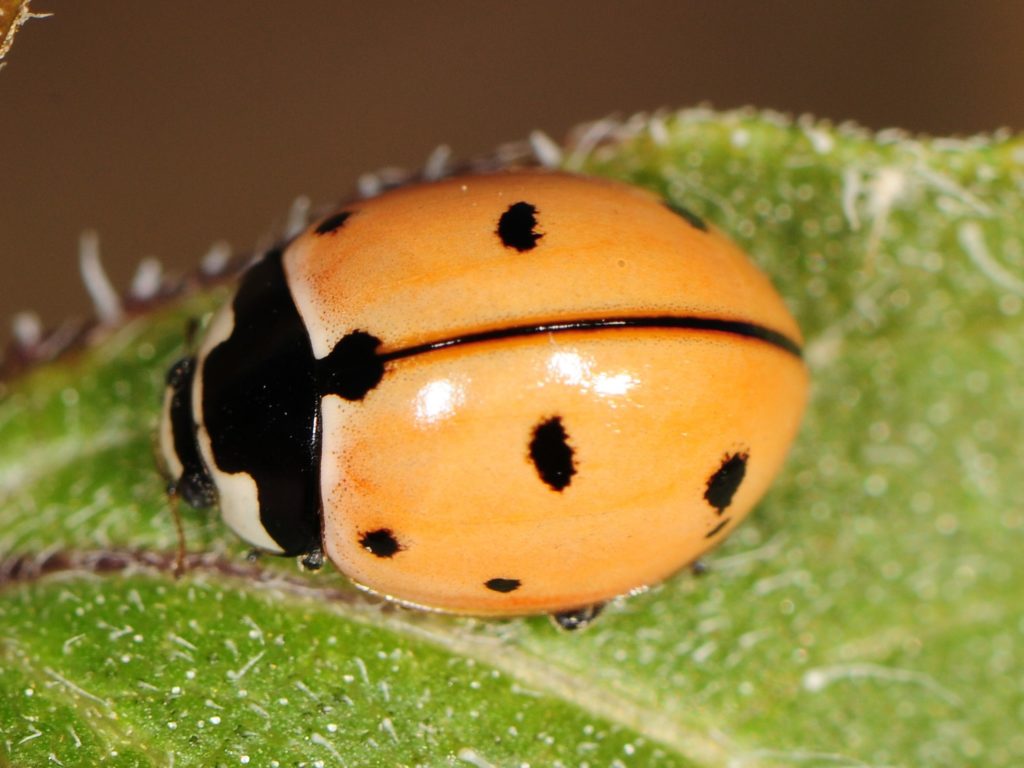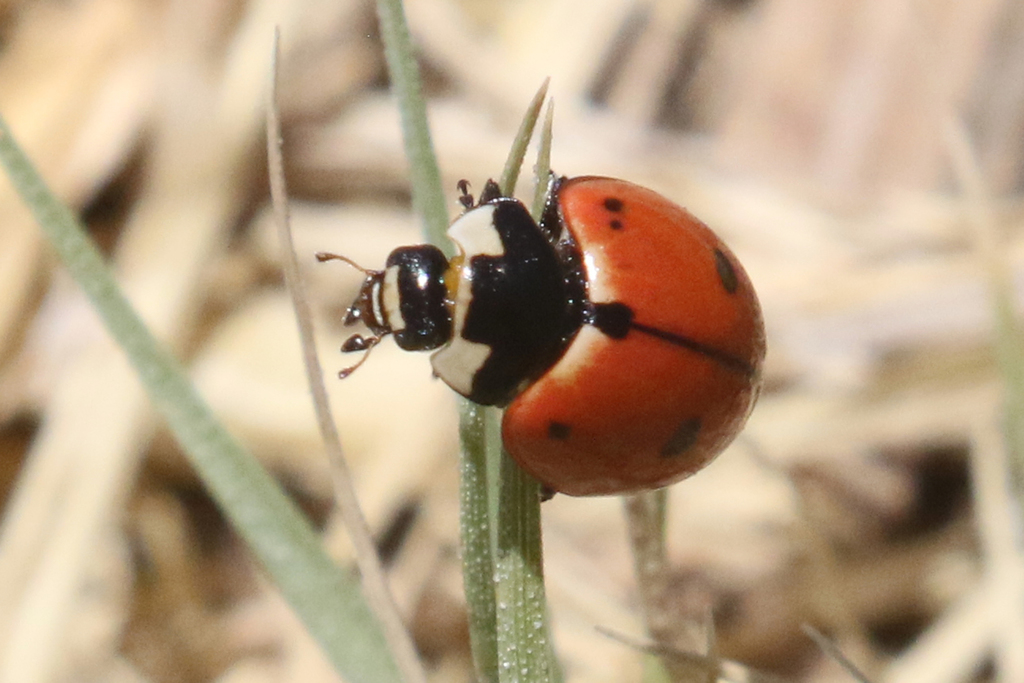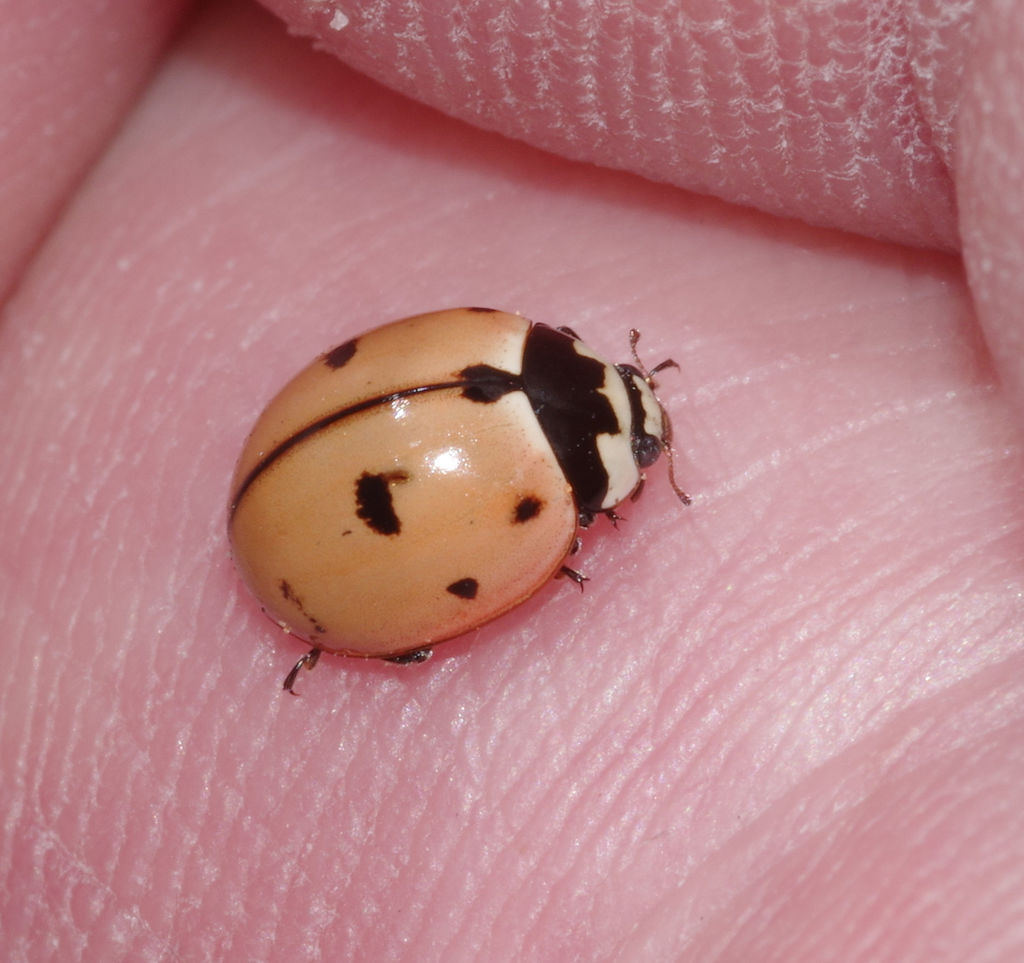
Nine-spotted Lady Beetle © Jason Michael Crockwell
The Nine-spotted Lady Beetle is native to North America. Once a common species in the northeastern U.S., it is now considered rare. This species has four black spots on each wing cover and one that is split between them. The suture between the wing covers is also black. It is most active from May to September.
Status
Native
Presumed Extirpated in Florida; Critically Imperiled in New York, Nebraska, Connecticut, Ontario, and British Columbia; Imperiled in Alberta; Vulnerable in Manitoba; and Apparently Secure in Saskatchewan.
Causes of decline are not known. It is likely that introduction of non-native species, land use change, introduced pathogens, and pesticide use are all contributing factors.
Last Seen
1996
Fun Fact
The Nine-spotted Lady Beetle is New York’s state insect.
Identification
Nine-spotted Lady Beetles are between 4.7 and 7 mm in length.
- Head: Black, with a white patch in between the eyes.
- Pronotum: Black, with two rectangular, white patches on either side of the front of the pronotum (towards the head). These patches are connected by a pale band across the front of the pronotum.
- Elytra: Yellow, yellowish-orange, or red in color, usually with 9 spots total (four on each elytron and one in the top center near the pronotum, which spans both elytra). The spots vary in size, and some adults have fewer or no spots. The suture (line where the wing covers meet when closed) is black.
- Legs: Black.
- Often confused with: Seven-spotted Lady Beetle, Five-spotted Lady Beetle, and Convergent Lady Beetle.
Habitat
Habitat generalist, utilizing gardens, agricultural fields, parks, forests, grasslands, meadows, prairies, and riparian zones. Nine-spotted Lady Beetles seem to prefer edge habitat or grassy habitat mixed with shrubs and trees (“old fields”). Associated vegetation includes birch, pine, spruce, maple, mountain ash, poplar, willow, sage, cherry, alder, thistles, scruff peas, alfalfa, potatoes, corn, soybeans, and cotton.
General Range
This species used to be very common, with a wide range across most of the United States and Canada. Following wide-spread declines in the 1980s, the Nine-spotted Lady Beetle is now mostly restricted to the western U.S. and Canada, with scattered mid-western populations. Few populations remain on the east coast, it is thought to be nearly extirpated in the east.
Food
Primarily aphids, along with other small, soft-bodied insects. Will also consume nectar and pollen.
Life Cycle
In the northern parts of their range (including Vermont), adults are encountered most frequently between late June and August, with peak activity in July. Nine-spotted Lady Beetles can have two generations per year, and their lifespan is shorter in the warmer parts of their range. It takes between 15 and 20 days for development from egg to adult to occur. Eggs are deposited in clusters of approximate 18 on a wide range of plants, and females sometimes lay unfertilized eggs with the cluster to provide food for newly-hatched larvae. Females can lay upwards of 690 eggs over the course of their life. In the fall, remaining adults find a place to overwinter and re-emerge in the spring to breed.
More Information
You can find more information about Nine-spotted Lady Beetles using the following links:
Vermont Distribution
Visit the iNaturalist Observation Map and Occurrence Records to find out where Nine-spotted Lady Beetles have been seen in Vermont.








